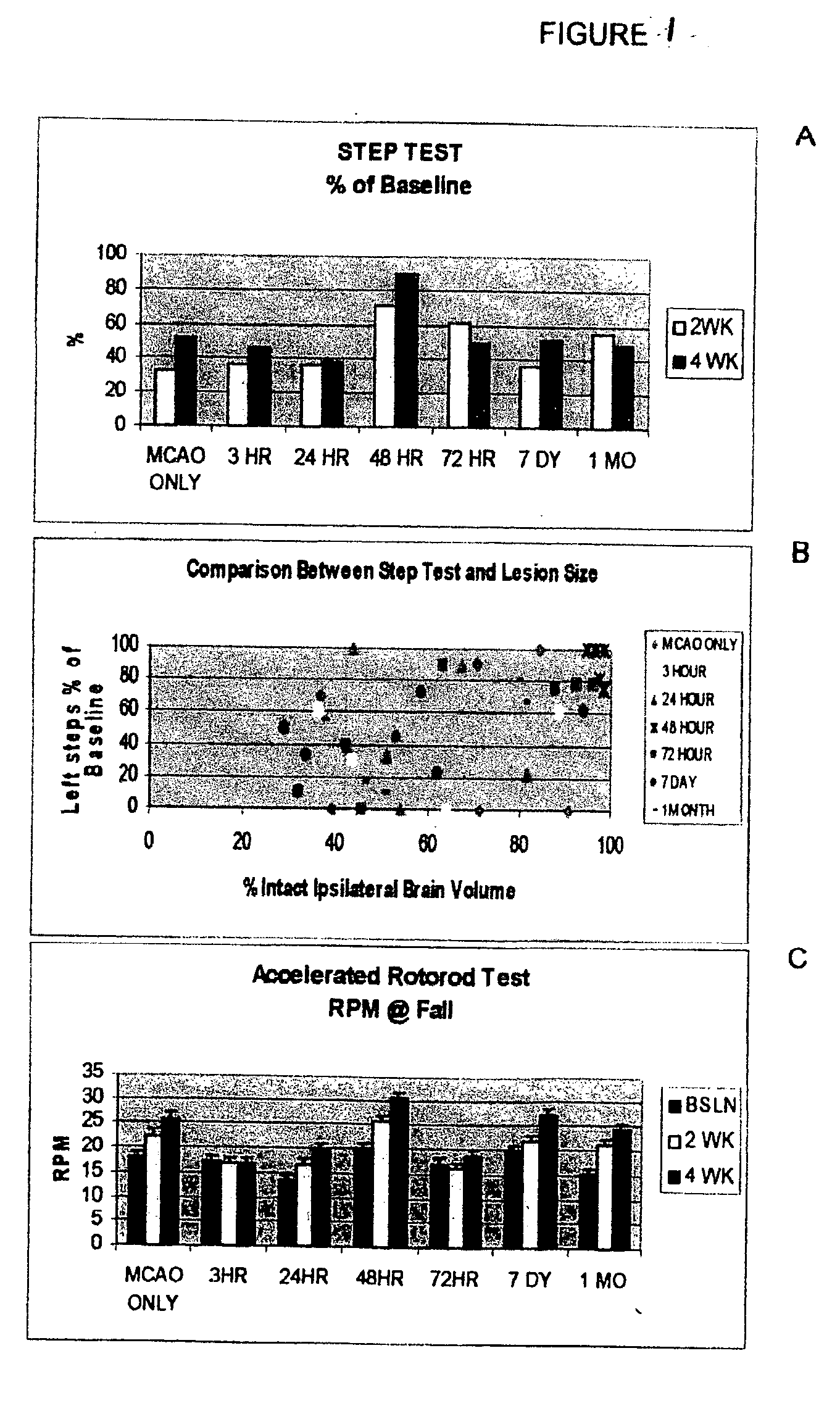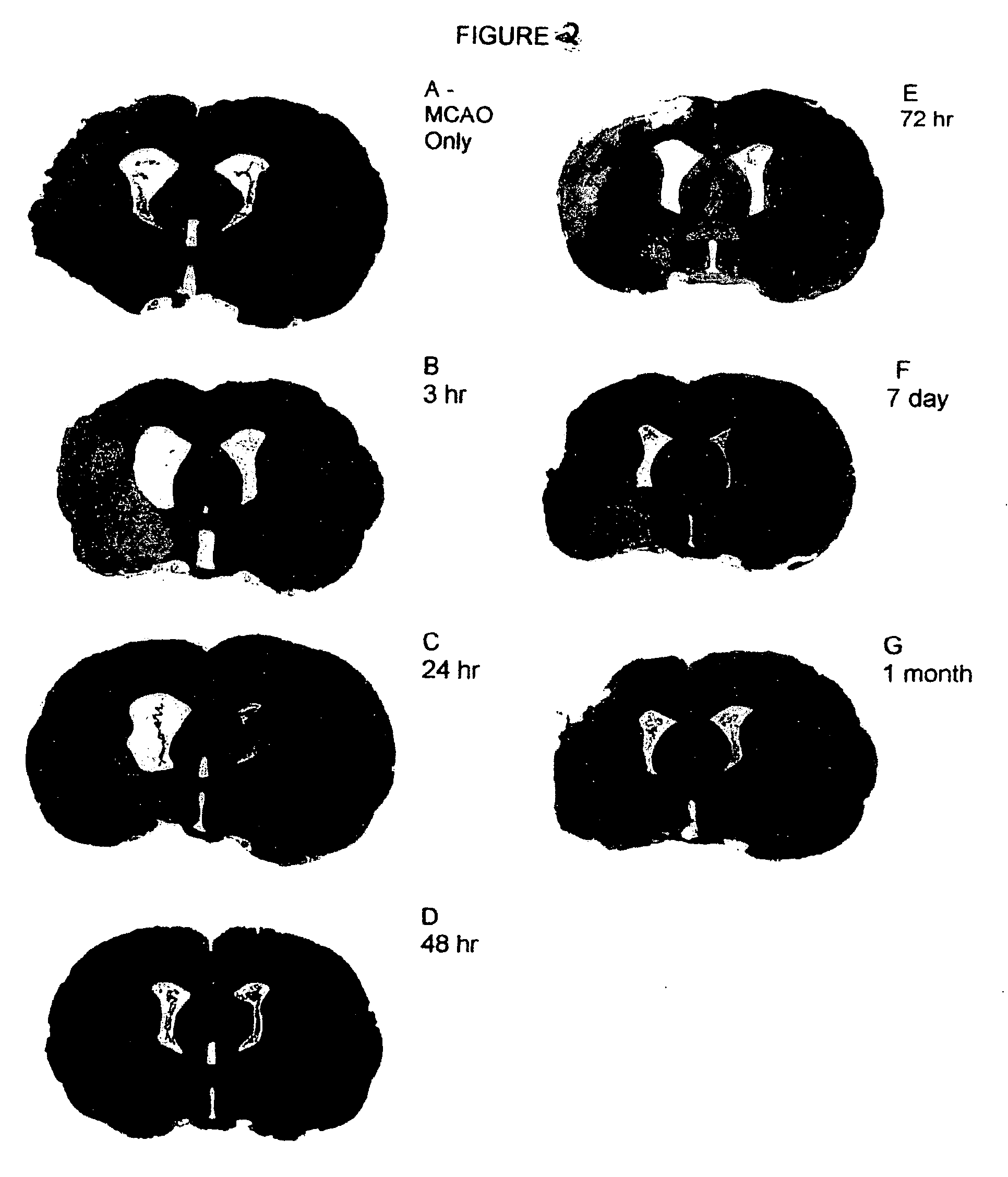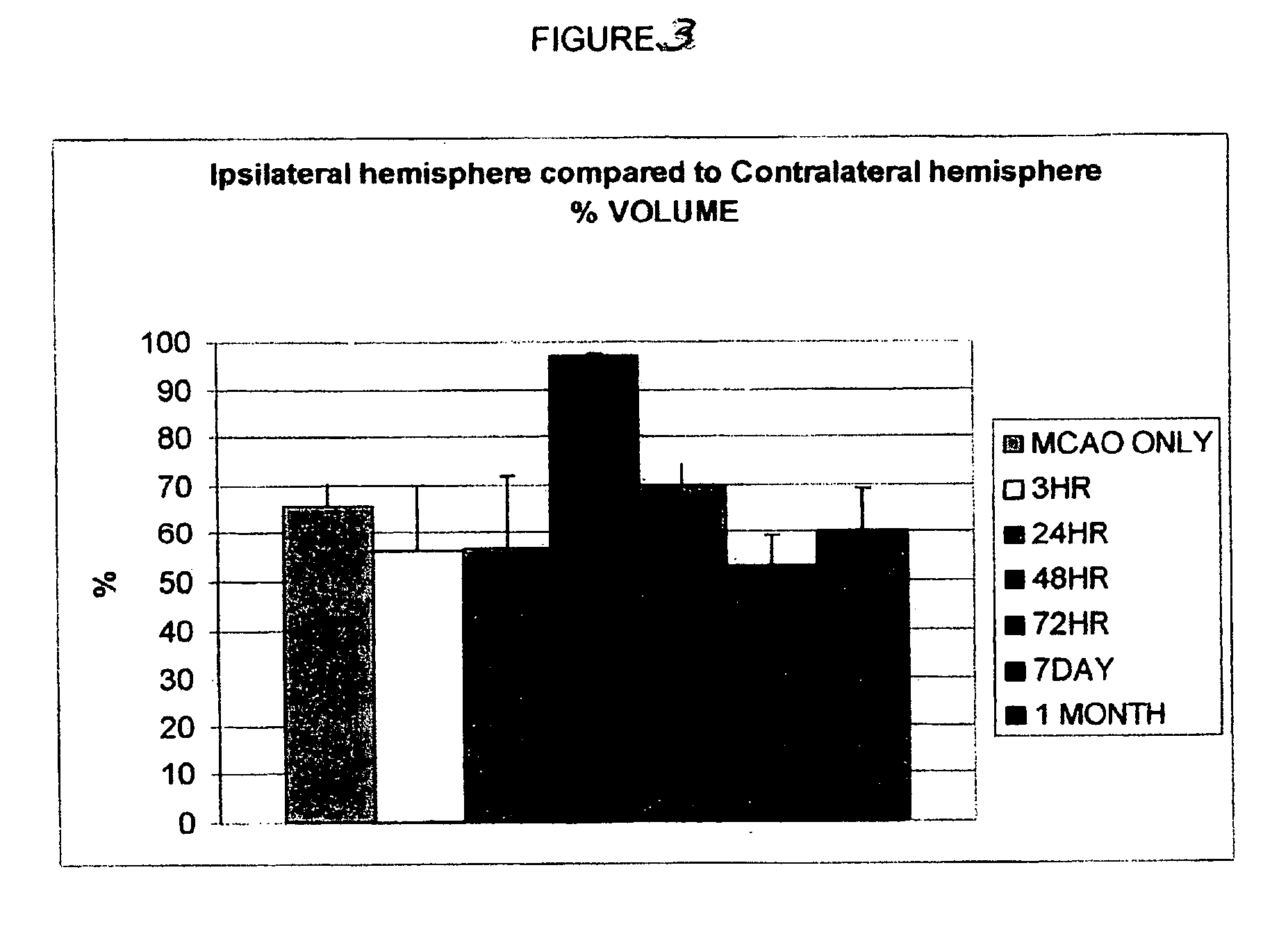Method of potentiating inflammatory and immune modulation for cell and drug therapy
a cell and drug therapy and immune modulation technology, applied in the field of cell and drug therapy potentiating inflammatory and immune modulation, can solve the problems of ineffective treatment, insufficient data, and reduced time available, and achieve the effect of less deficits and devastation of side effects
- Summary
- Abstract
- Description
- Claims
- Application Information
AI Technical Summary
Benefits of technology
Problems solved by technology
Method used
Image
Examples
example 1
[0132] Permanent Middle Cerebral Artery Occlusion (MCAO or CVA). Sixty-three Sprague Dawley rats (200-250 g) were anesthetized with isoflurane (2-5% in O2 at 2 L / min). All animals were placed on a heating pad. The right common carotid, external carotid, internal carotid and pterygopalantine arteries were isolated using blunt dissection. The external carotid was ligated, cut and an embolus made of nylon thread (25 mm long) was inserted through it. Once in place, the embolus was tied permanently, and the skin was closed.
[0133] Cell Preparation and Transplantation. The HUCBCs (Cambrex Corp, East Rutherford, N.J.) were thawed at 37° C. in Isolyte balanced electrolyte solution with a pH of 7.4. The cells were washed and centrifuged three times (1,000 rpm for 10 min). Viability was determined using the trypan blue exclusion method. Cell concentration was adjusted to 106 in 500 μL, the dose that was used. The rats were randomly assigned to one of seven HUCBC transplantation groups by the ...
example 2
[0142] Once treatment at approximately 48 hr was demonstrated to contribute to the greatest physiological and behavioral recovery, a group of animals was subjected to MCAO while monitored with laser Doppler to verify that the MCAO technique was consistent in its ability to produce a severe drop in cerebral blood flow. Animals in this group reproduced the findings supra of cell death and inflammation after MCAO and HUCBC transplantation and confirmed the therapeutic value of HUCBC therapy applied at the appropriate time interval.
[0143] Prior to MCAO surgery, rats were anesthetized and maintained with isoflurane (2-5% in O2 at 2 L / min), and a small access port was drilled through the skull 1 mm posterior and 4 mm right lateral to the bregma. A fiber optic filament was placed through the access port to rest on the dura mater, with care taken to avoid disturbing the meninges and cerebral cortex, and was connected to the laser Doppler (Motor Instruments, Devon, UK) which recorded cerebr...
example 3
[0146] The cytokine release from the ischemic areas after MCAO at different time points and from HUCBCs themselves were investigated. Both monocytes-chemoattractant protein 1, MCP-1, and growth-related oncogene / cytokine-induced neutrophil chemoattractant-1, GRO / CINC-1 (the rat equivalent of human IL-8), were elevated in rat ischemic tissue extract in the cortex, striatum and hippocampus. Results of these ELISAs showed a time-dependent pattern similar to that observed with the migration data (Newman et al., 2003a, ibid.). In addition, our initial cytokine arrays of the HUCBCs showed that the mononuclear fractions of this cell population released MCP-1, IL-8, epithelial cell-derived neutrophil activating protein (ENA-78), and macrophage derived chemokine (MDC).
[0147] The mononuclear fraction of the HUCBCs was obtained from Saneron CCEL Therapeutics, Inc. (Oldsmar, Fla.). Frozen samples were thawed in 10 mL of DMEM (Gibco), supplemented with 5% fetal bone serum (FBS, Gibco) and gentam...
PUM
 Login to View More
Login to View More Abstract
Description
Claims
Application Information
 Login to View More
Login to View More - R&D
- Intellectual Property
- Life Sciences
- Materials
- Tech Scout
- Unparalleled Data Quality
- Higher Quality Content
- 60% Fewer Hallucinations
Browse by: Latest US Patents, China's latest patents, Technical Efficacy Thesaurus, Application Domain, Technology Topic, Popular Technical Reports.
© 2025 PatSnap. All rights reserved.Legal|Privacy policy|Modern Slavery Act Transparency Statement|Sitemap|About US| Contact US: help@patsnap.com



